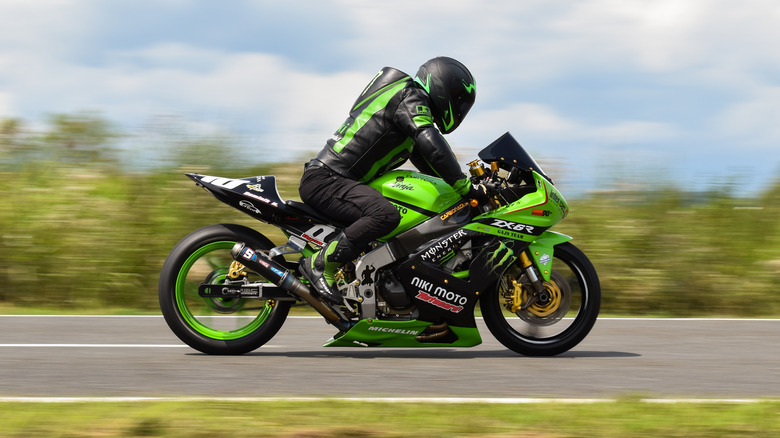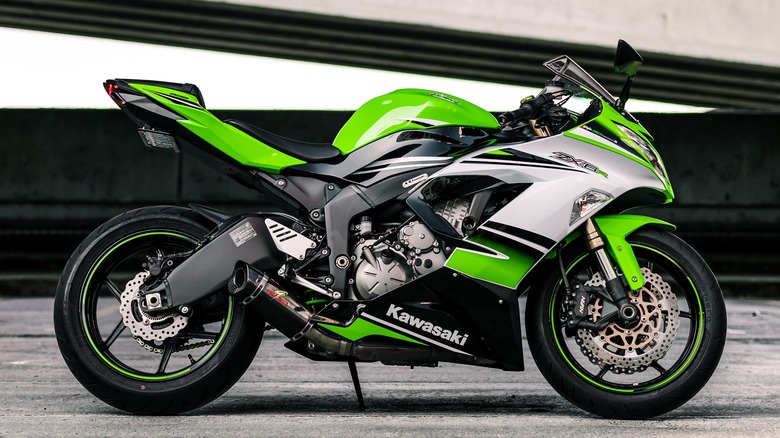Why Kawasaki Is Recalling The Ninja ZX-6R (And How To Check If You're Affected)
Kawasaki has announced that it is recalling its popular Ninja ZX-6R bike in multiple configurations, sold between 2023 and 2025. As the company sorts out the logistics to fix the engine power problem on the affected units, the National Highway Traffic Safety Administration (NHTSA) has warned current owners of the affected bikes to stop taking them for a ride with immediate effect. Moreover, the official advisory also tells them to avoid parking the bike outdoors.
As per the government agency, the bikes can lose engine power, which can culminate in accidents. The most worrying part is that the defect apparently has no visible warning signs of damage that could help identify the bikes at risk. The issue is tied to a metal crankshaft bushing that unexpectedly comes to a halt. So far, Kawasaki has not detailed the exact protocols for how the recall will proceed, but such issues are usually fixed at no cost. Interestingly, the Ninja ZX-6R is among the priciest two-wheelers sold by Kawasaki, owing to its Supersport status.
Now, if a bike loses power while riding, it poses a few serious risks. First, loss of power to the engine means the bike will decelerate rapidly. This could be particularly dangerous on fast-lane highways. Moreover, the engine braking system will also shut down, which can create problems while covering and getting a grip on speed control. In case you're wondering, the 636cc engine fitted on the bike offers a top speed of roughly 164 mph.
Is my Ninja affected?
As far as the specific models go, the recall affects the Kawasaki ZX636J/K (MY24 NINJA ZX-6R 40th Anniversary Edition ABS, and MY24 -25 Ninja ZX-6R ABS/KRT Edition ABS, and Ninja ZX-6R/KRT). All the units of these bikes that rolled off the assembly line between April 3, 2023, and April 28, 2025, exhibit the issue and should not be driven until Kawasaki comes out with a fix. The public recall note was submitted to the NHTSA in the first week of June, and the number of vehicles that are affected by the defect is listed at 17,792 units.
"The bolts holding the crankshaft together in the crank case were over-torqued, and as a result the #5 metal crankshaft bushing can be damaged by improper oil clearance between the crankshaft and the bushing," says the NHTSA's notice (PDF). It's worth noting here that only 1% of the bikes out of the nearly 18,000-unit batch are listed as defective.
As far as the underlying issue goes, it seems a bolt replacement would be the likely fix. Moreover, as the power supply to the connected power steering is disrupted, steering and handling are also affected, which makes it harder to maneuver the bike. If you're not a seasoned bike rider with technical awareness of throttle and lean angles, the chances of a crash are quite high. And in situations where the rear wheel gets locked due to engine inactivity, the rider may have a hard time controlling the resultant skid and vibrations.

